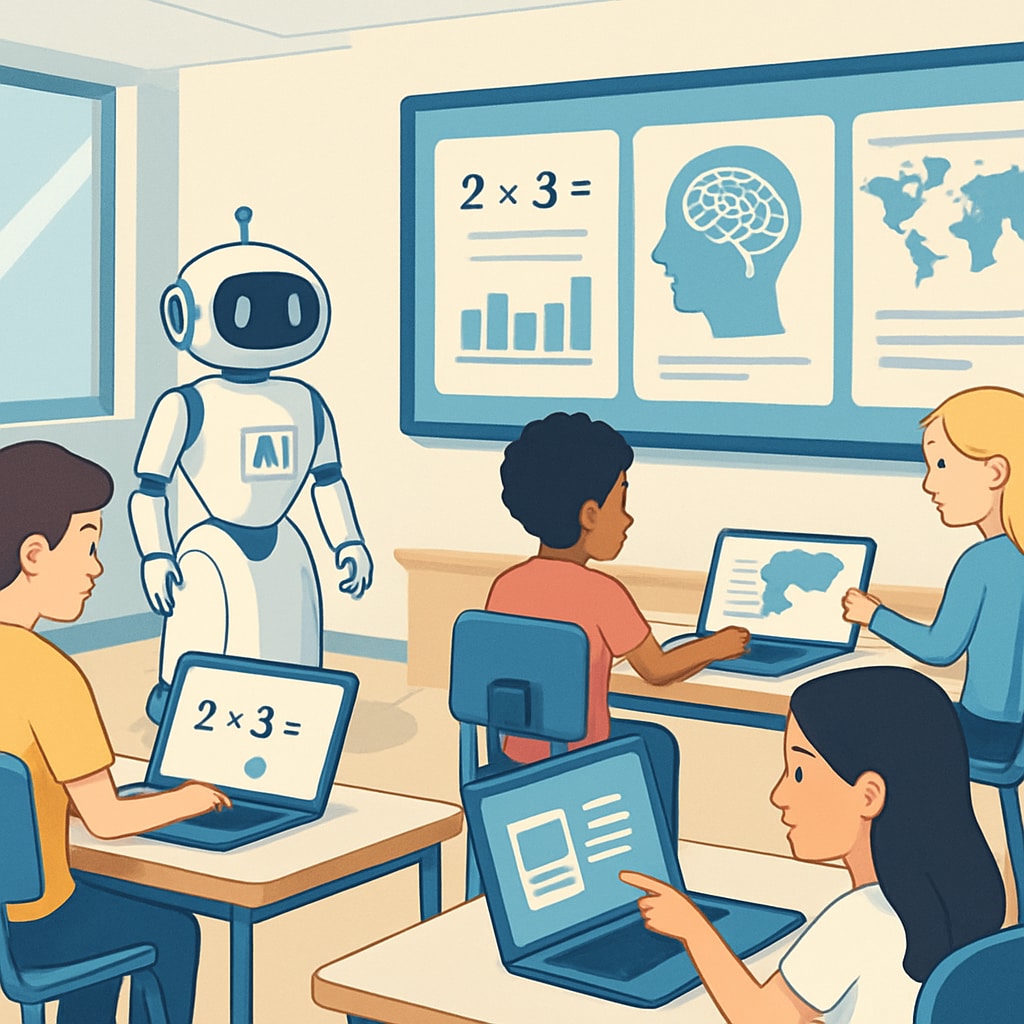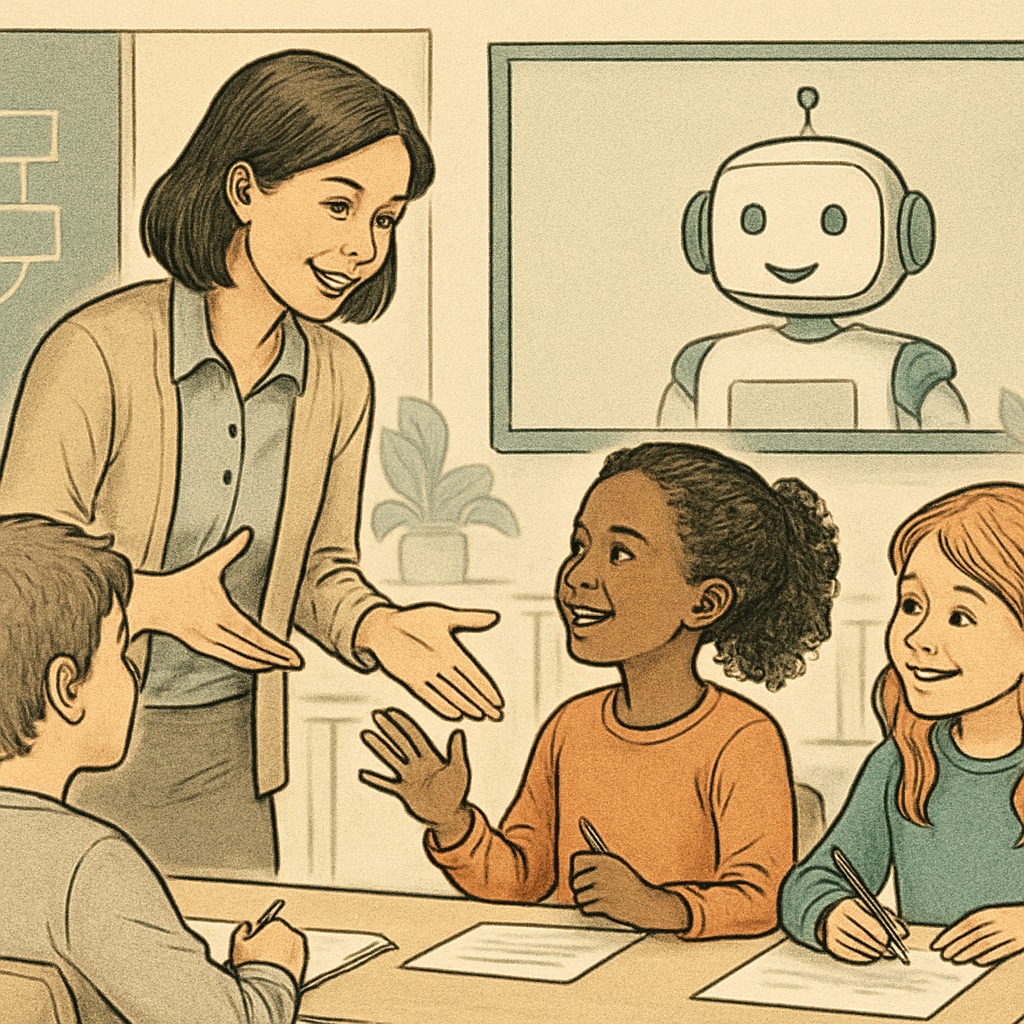Artificial intelligence (AI) is reshaping the landscape of education, bringing profound changes to the K12 system. In the next 5-10 years, AI’s impact on personalized learning, teacher roles, and equitable resource distribution will redefine traditional education models. However, amidst this technological revolution, it is critical to uphold the fundamental essence of education: fostering curiosity, creativity, and human connection.
Personalized Learning: AI Tailoring Education for Every Student
One of AI’s most transformative impacts on K12 education lies in its ability to deliver personalized learning experiences. AI-driven platforms and tools are capable of assessing each student’s strengths, weaknesses, and learning styles. By analyzing data from student interactions and performance, AI can craft customized lesson plans, recommend targeted exercises, and adapt teaching methods to suit individual needs. This level of personalization ensures that no student is left behind while enabling advanced learners to be consistently challenged.
- Students receive tailored learning paths based on real-time progress tracking.
- AI-powered tutors offer instant feedback and guidance, reducing dependency on human intervention.
- Interactive tools like adaptive quizzes support continuous improvement.
For example, platforms such as Khan Academy already utilize AI to provide personalized educational content, showcasing the potential to scale these capabilities across global classrooms.

Redefining Teacher Roles in an AI-Enhanced Classroom
While AI offers remarkable automation and efficiency, it does not replace the unique role of teachers. Instead, it redefines their responsibilities, allowing them to focus on mentorship, emotional support, and creative instruction. Teachers will transition from being sole knowledge providers to facilitators of deeper engagement, critical thinking, and interpersonal skills.
- AI handles repetitive tasks such as grading and administrative work, freeing up teachers’ time.
- Enhanced insights from AI help teachers identify struggling students more effectively.
- Teachers can focus on nurturing collaboration and problem-solving skills in group settings.
As a result, the relationship between teachers and students becomes more meaningful, emphasizing human interaction that technology cannot replicate. For additional reading on the evolving role of educators, visit Edutopia.

Equitable Resource Distribution: Addressing Educational Disparities
AI has the potential to bridge gaps in educational access and resource allocation. By analyzing regional and institutional data, AI systems can identify areas with inadequate resources and propose solutions. Schools in underserved regions can benefit from AI-powered content delivery, virtual classrooms, and remote learning tools, ensuring that quality education is not limited to privileged areas.
- AI identifies disparities in resource allocation and suggests actionable improvements.
- Remote learning platforms extend educational opportunities to rural regions.
- AI-driven translation tools make learning materials accessible in multiple languages.
For instance, UNESCO’s efforts in AI for education highlight the importance of using technology to achieve inclusivity and equity in global education systems. You can explore their initiatives here.
However, it is essential to consider ethical concerns surrounding AI in education, such as data privacy, algorithmic bias, and the risk of over-reliance on technology. Balancing innovation with ethics is key to ensuring AI serves as a tool for empowerment rather than exclusion.
Preserving the Essence of Education in the AI Era
Despite its incredible advantages, AI must complement rather than overshadow the essence of education. The ultimate goal of schooling is not merely academic achievement but the development of well-rounded individuals capable of critical thinking, empathy, and collaboration. Teachers, parents, and policymakers must work together to ensure AI enhances rather than diminishes the human aspects of learning.
As a result, the future of K12 education will depend on striking a balance between technological advancements and the preservation of values that define the human experience. AI is a powerful tool, but its integration into classrooms must align with the broader mission of education: nurturing lifelong learners who are prepared to navigate an ever-changing world.
Readability guidance: Use concise paragraphs, bullet points, and images to create an engaging and accessible article. Maintain a balance between technical insights and human-centered perspectives, ensuring the content resonates with educators, parents, and policymakers alike.


